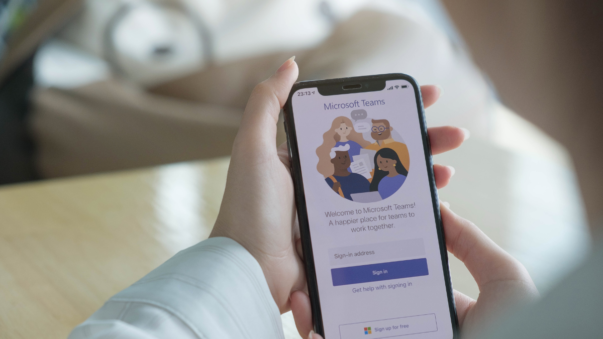Microsoft New Teams App: Everything you Need to Know
The new Teams app is in preview mode. Here's what to expect before you make the switch.

Since its launch in 2017, Microsoft Teams has become an essential work tool for users and organisations; a workspace for real-time collaboration and communication with more than 300 million monthly active users. But like all popular apps, it needs to be updated to take account of advances in technology and working practices.
While Microsoft introduced the latest version of Teams for Windows and Mac in 2023, regular Microsoft Teams users will only recently have noticed the prompt to “go to new Teams” or “continue to classic”, as the app is now in public preview.
But what are the key differences and how will users be affected?
Classic Teams vs new Teams app
Designed to be simpler, more flexible and faster than “classic Teams”, the new Teams app has been optimised for more efficient use. Users can be signed into multiple organisations and accounts simultaneously, and receive notifications for all, no matter which account is in use.
Performance – The new Teams app is twice as fast as before and uses 50% less memory, making it ideal for those with older devices, or those who work with multiple applications open simultaneously.
Interface – Aesthetically, the new Teams has a much more streamlined interface; fewer clicks are needed to do what you want to do. For instance, all your accounts and notifications can be viewed in a single drop-down menu. There’s no longer a need to log out and switch accounts manually. Likewise, video-calling takes just two clicks from a chat thread. In the upper-right-hand corner, select the arrow beside the phone icon, then select Video Call to start the call with video.
There are other little tweaks you’ll notice, such as when someone raises a hand to ask a question, the hand is automatically lowered after the person has spoken.
Security – Compared the classic version, the new Teams app supports secure environments like Virtual Desktop Infrastructure (VDI) and government clouds for those with stricter compliance requirements. The new Teams app is built using the JavaScript library, React, as it makes it easier for engineers to write more secure code. As well as improved Content Security Policy (CSP), when Trusted Types, a browser-enforced technology, is enabled, the browser is able to protect against Cross Site Scripting (XSS) vulnerabilities.
Features – Nothing much has changed when it comes to new features. However, while the new Teams app has been designed with “full feature parity” compared to the classic app, future new features will only be added to the new Teams app.
Other notable changes users should be aware of is that the Contacts list has been replaced by the new People app and the Wiki app in now integrated into the Notes app. Third-party cloud storage options are now directly accessible from the Teams App store.
Ready to make the move to the new Teams app?
Many users will of course be tempted to “continue to classic” option out of convenience, but eventually, the new Teams app will become the default option so it might be time to explore the latest incarnation to get accustomed to the new Teams app and assess what adjustments, if any, will be needed to the way you use Teams. The current deadline to access the classic Teams app has been extended to July 1st to give admins more time to fix any issues from switching over to the new app.
That said, the new Teams app has been specifically redesigned from the ground up to make things easier for users. It loads faster and makes it quicker for users to join meetings, so those are just two reasons to start using the app now.
If you do have any queries, DigitalWell customers can contact their account manager. Further details on the upgrade can be found at Microsoft Support.
To put Microsoft Teams, or another DigitalWell Unified Comms solution to work in your organisation, contact us today.
For more insights on how CX technology and AI is transforming the customer experience industry, download our report, “AI & CX: From Transition to Transformation“.


